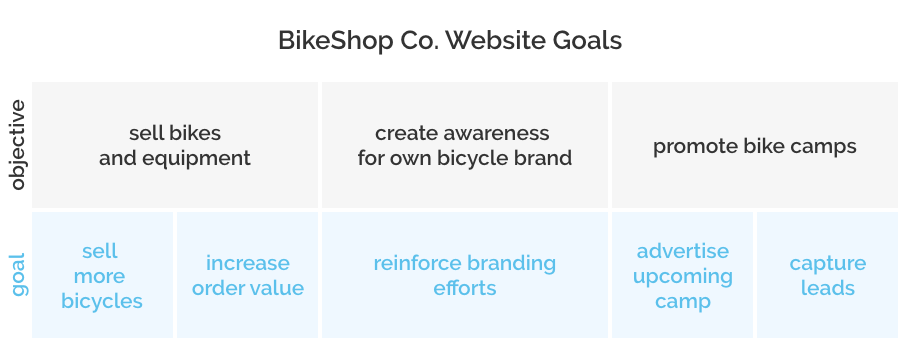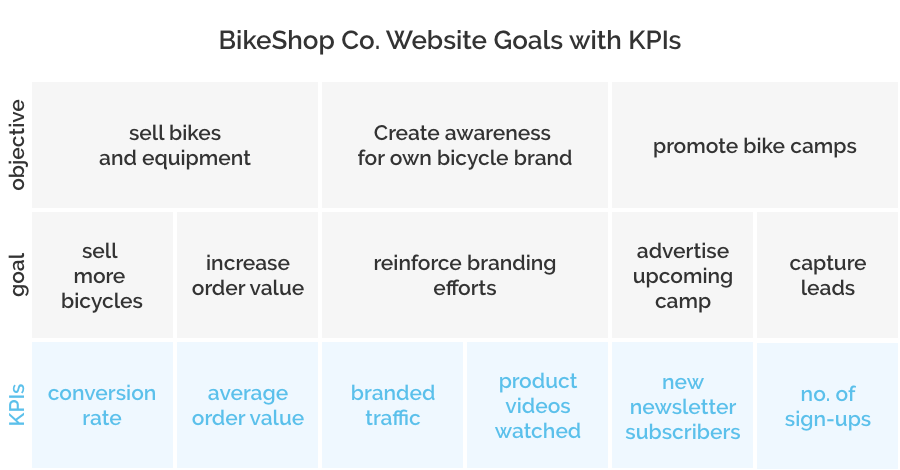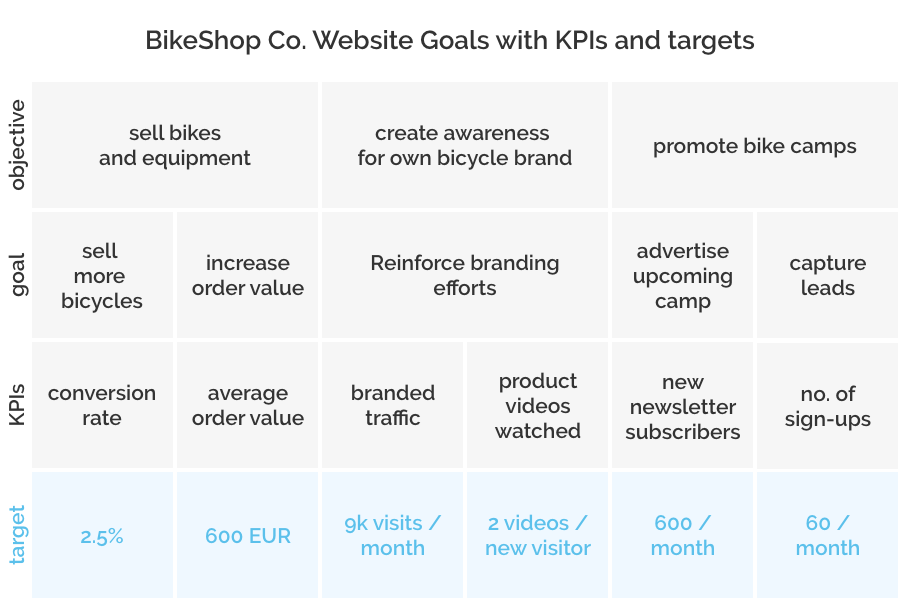“One day Alice came to a fork in the road and saw a Cheshire cat in a tree. ‘Which road do I take?’ she asked. ‘Where do you want to go?’ was his response. ‘I don’t know,’ Alice answered. ‘Then,’ said the cat, ‘it doesn’t matter.”<br/><br/>― Lewis Carroll, Alice in Wonderland
Lewis Carroll tried to teach us, through her children’s tale, that if you don’t have a clear goal for your website anything you build is equally good (or bad).
What happens when you don’t have a goal for your website? The management agrees to put up a website just because every other company out there has one. They are NOT motivated to invest in it. They don’t understand the benefit of a website, and why would they? Management doesn’t care about technology, they care about the bottom line. And if there’s no connection between the two, it’s your responsibility to help them see the connection.
I hope the situation above doesn’t sound familiar, because it’s frustrating for everyone involved, but if it does, read on and you’ll find out how to dramatically improve it.
Strategy #1: Get clarity and agree on what business outcome you are looking to achieve through your digital efforts.
The holy grail of getting managers interested in the faith of the website is to show them the direct impact that changes to the website has on the bottom line. To do so, follow the 4 step process below to turn business outcomes into measurable website goals.
We’ll build an example around a fictional bike shop. Why? Because it’s more complicated than a digital product store, so if you get the handle of this type of e-commerce experience you’ll be able to apply it to a broader range of businesses.
Ask the question: Why does our website exist?
If you haven’t done this before it will take more thinking than you might expect. Also, it’s a good idea to involve the decision makers in the process. This accomplishes two goals:
- you get confirmation that your efforts are in line with where the business is going, and
- stakeholders feel involved and accountable for the end result.

Now that you have clarity why the website (should) exist, you need to ask yourself how is the website going to achieve those objectives. For that you’re going to come up with goals for each objective.
Below is our bike shop example.

There we go. We have a clear structure of how the website goals help achieve the business objectives.
For example to deliver on 'sell bikes and equipment' our website must ‘sell more bicycles’ and 'Increase order value'. Notice that there’s no specific tactics dictated about how to accomplish these goals. That’s for the marketing team to decide on.
This structure gives us clarity and the liberty to test different approaches to achieve each one of the websites’ goals.
Key Performance Indicators are the critical (key) indicators of progress toward an intended result. For example, a marathon runner might use minutes / kilometer (or minutes / mile) as a KPI.
For your website goals you’ll have to come up with measurable indicators of progress for each goal. If your goals are more complex brainstorm several KPIs before choosing the most appropriate.
The KPIs for the website goals identified previously might look something like this

Here’s an interesting insight. For all KPIs you can (or should be able to) calculate the monetary value. Meaning, you should be able to calculate how much $$$ (or euros, Yens, etc) your business would make if ‘conversion rate’ would increase by 1%. How cool is that?
If you stop at setting KPIs for your goals, you’re already ahead of the game, but if want to achieve glory and shareholder value then go the extra mile with Step 4.
Set clear a target for each KPI. The fact that KPIs are measurable is going to help a lot here. Have a chat with the stakeholders and decide on what result is desired for each effort.
After talking to the bike shop manager and with the bike camp organizer here are the KPIs targets for our bike shop website.

Hopefully this example helped you get inspired about building a structured model for your web and marketing analytics.
Working back from a business outcome is important when building a website, a digital product or a marketing campaign. It gets everybody focusing on the important things and avoids wasting energy debating details that don’t impact the bottom line.